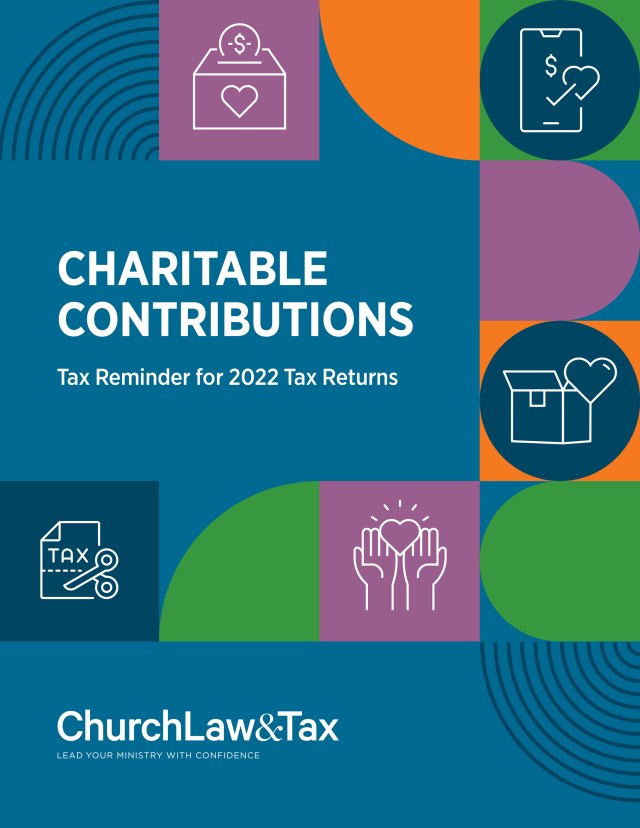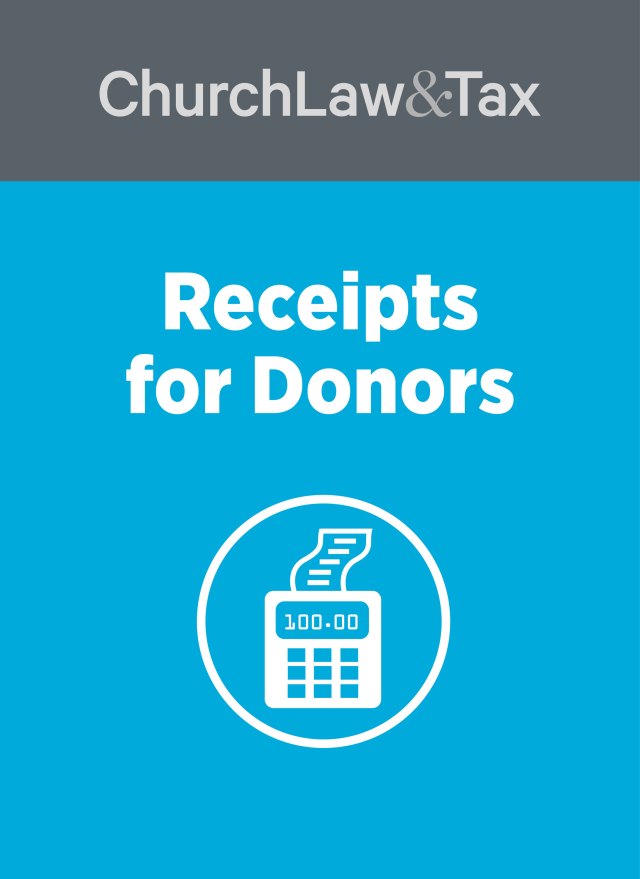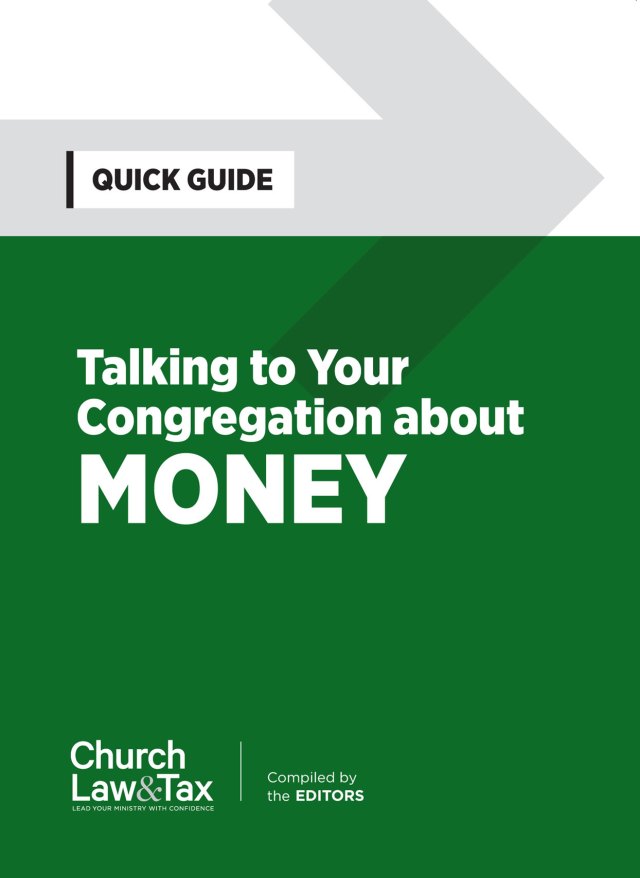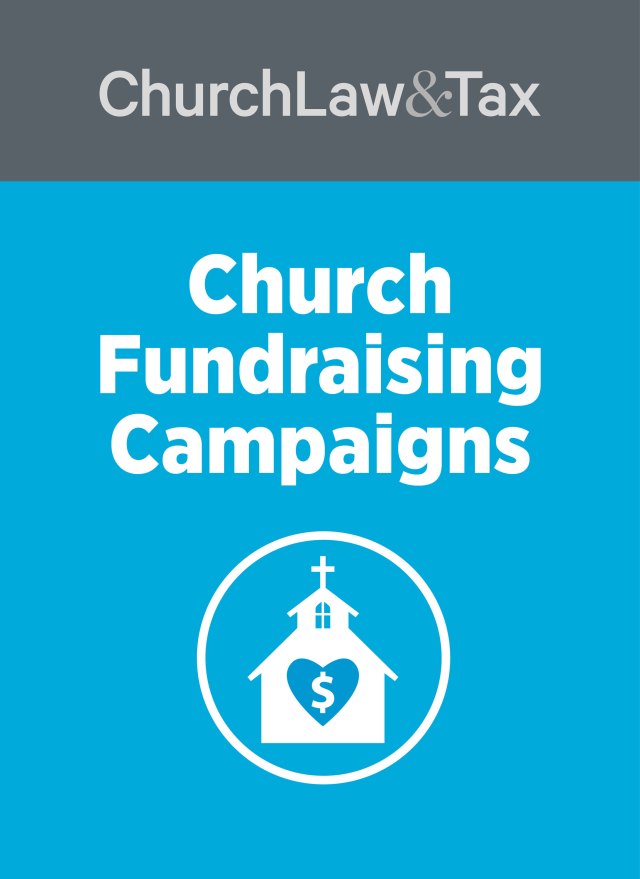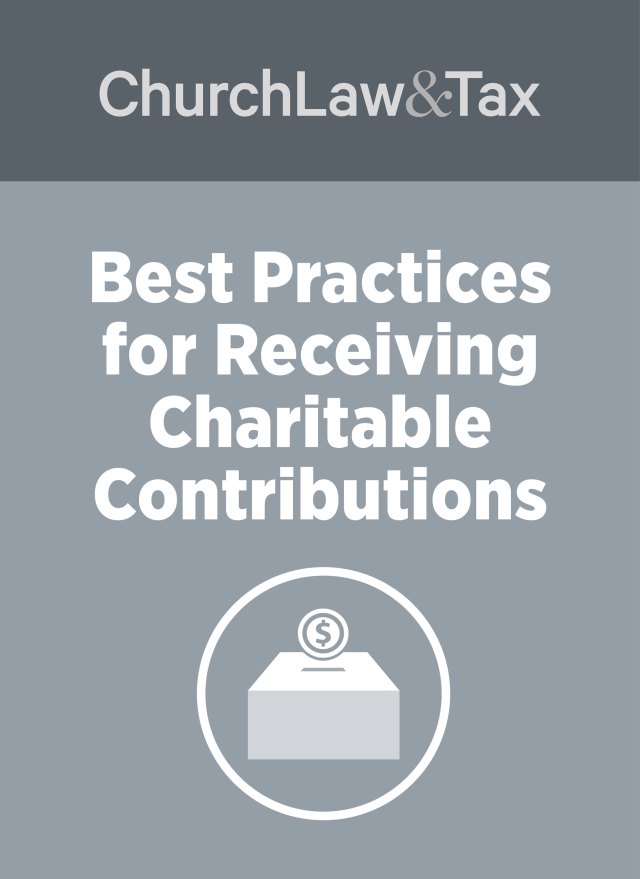some tax consequences of Hurricanes Katrina and Rita
Article summary. The recent devastation of parts of Louisiana, Mississippi, Alabama, and Texas by Hurricanes Katrina and Rita has raised a number of tax questions of direct relevance to church leaders. This article will review several of them.
On August 29, 2005, Hurricane Katrina slammed into the central gulf coast near New Orleans as a Category 4 storm. It caused damages of unprecedented magnitude in Louisiana, Mississippi, and Alabama, with much of the damage occurring in New Orleans as a result of flooding caused by a failure of the levee system caused by the storm surge. Over 90,000 square miles were declared disaster areas by the federal government. A few weeks later, Hurricane Rita made landfall between Sabine Pass, Texas and Johnson’s Bayou, Louisiana as a Category 3 storm, causing significant damage.
There are a number of tax issues associated with any natural disaster. This article will address some of the more important ones.
(1) Tax deadlines
The IRS is giving “affected taxpayers” until Feb. 28, 2006 to file most tax returns (including individual income tax returns and employment tax returns), or to make tax payments, including estimated tax payments, that have either an original or extended due date falling on or after Sept. 23, 2005 and on or before Feb. 28, 2006. The IRS will abate interest and any late filing or late payment penalties that would apply during this period to returns or payments subject to these extensions. This relief includes the October 17 deadline for individuals who received a second extension for filing their individual income tax returns; the October 31 deadline for filing quarterly federal employment tax returns; and employment deposits due on or before February 28, 2006. In addition, any affected taxpayer who receives a penalty notice from the IRS should call the number on the notice to receive penalty abatement.
This extension to file and pay does not apply to W-2 or 1099 forms, or to employment tax deposits due on or before Feb. 28, 2006. Penalties for failure to timely file these returns can be waived under existing procedures for reasonable cause. The IRS will abate penalties for affected taxpayers for failure to make timely deposits, provided they make these deposits by Feb. 28, 2006.
In the hardest-hit areas (those counties designated by the Federal Emergency Management Agency as “individual assistance areas”) the tax relief will be automatic, and taxpayers won’t need to do anything to get the extensions and other relief available. Relief for those outside of individual assistance areas, but still within designated disaster areas, will need to identify themselves to the IRS as hurricane victims. This is done by writing “Hurricane Katrina” or “Hurricane Rita” (whichever is appropriate) in red ink at the top of their tax forms or any other documents filed with the IRS. Taxpayers who need to alert the IRS or have other hurricane -related questions can also call the special IRS disaster hotline at 1-866-562-5227.
Affected taxpayers entitled to this relief include individuals who live, and businesses whose principal place of business is located, in a designated disaster area. Taxpayers not in the covered disaster area, but whose books, records, or tax professionals are in the covered disaster area, are also entitled to relief. In addition, all workers assisting in the relief activities in the covered disaster area are eligible for relief whether or not they are affiliated with a recognized government or philanthropic organization. Any individuals visiting the covered disaster area that were killed or injured as a result of the hurricane are also entitled to relief.
(2) Leave-based donation programs
The IRS is encouraging employers to establish hurricane relief leave donation programs and is providing special tax treatment to support such programs. Under a leave donation program, employees can elect to forgo their vacation, sick or personal leave in exchange for the employer making cash payments to a qualified tax-exempt organization providing relief for victims of Hurricanes Katrina or Rita. Employees do not have to include the donated leave in their income.
The cash contribution by the employer must be (1) made to a qualified tax-exempt organization; (2) dedicated to Hurricane Katrina or Hurricane Rita relief; and (3) paid to the organization by December 31, 2006
These programs provide employees with a way to help hurricane victims without needing to make a cash contribution. The benefit is available regardless of whether an employee normally takes the standard deduction or itemizes. For employees who have extra vacation, sick or personal leave balances or who just simply want to provide more to the hurricane relief efforts, a leave program makes it easier for them to help the victims go about the difficult task of rebuilding their lives.
IRS Commissioner Mark Everson said this about leave-based donations: “We want to encourage employers and taxpayers to take advantage of the new leave donation program. We will allow employees to donate their vacation or sick leave in exchange for their employer sending cash payments to charitable groups helping hurricane victims. To put it simply, workers can turn their unused vacation or sick leave into cash to help the hurricane victims. About two-thirds of Americans take the standard tax deduction. For these non-itemizers, taxpayers get the tax benefit of a charitable deduction, which they don’t normally get when they don’t itemize. It’s a good thing for taxpayers. This program will extend through the end of 2006. So people can have a chance to donate even if they’ve used their vacation time this year. We urge workers and employers to look into this option.”
(3) Property losses
If you suffered major damage, you may be able to deduct some of your loss on your federal income tax return. Only losses not covered by insurance or other reimbursements are eligible. Because of the way this deduction is figured, only major losses normally result in tax savings.
There is a special rule that applies to deductible losses on property located in a Presidentially-declared disaster area. Under this rule, you can choose to claim your losses on your 2004 return or wait until the end of the year and claim them on your 2005 return. If you elect to claim the loss on your 2004 return you do not have to complete your entire 2004 return all over again. Instead, file an amended return using Form 1040X. You use this form to claim your losses and show the items that need to be changed on your original return.
(4) Charitable contributions
The IRS has provided helpful information addressing the deductibility of contributions to disaster relief. Here are some of the highlights:
- Contributors to charitable organizations may be eligible to claim federal income tax deductions for their contributions if they file itemized tax returns. Qualified organizations include charitable organizations that the IRS has determined are exempt from federal income tax. This includes most churches and religious organizations.
- Disaster relief organizations may provide assistance in the form of funds, services, or goods to ensure that victims have the basic necessities, such as food, clothing, housing (including repairs), transportation, and medical assistance (including counseling). The type of aid that is appropriate depends on the individual’s needs and resources. For example, immediately following a devastating flood, a family may be in need of food, clothing, and shelter, regardless of their financial resources. However, they may not require long-term assistance if they have adequate financial resources. Individuals who are financially needy or otherwise distressed are appropriate recipients of charity.
- Financial need or distress may arise through a variety of circumstances. Examples include individuals who are (1) temporarily in need of food or shelter when stranded, injured, or lost because of a disaster; (2) temporarily unable to be self-sufficient as a result of a sudden and severe personal or family crisis, such as victims of crimes of violence or physical abuse; (3) in need of long-term assistance for housing, childcare, or educational expense because of a disaster; (4) in need of counseling because of trauma experienced as a result of a disaster or crime.
- The group of individuals that may properly receive assistance from a charitable organization is called a charitable class. A charitable class must be large or indefinite enough that providing aid to members of the class benefits the community as a whole. There are two important consequences of this requirement:
- A charity cannot target and limit its assistance to specific individuals, such as a few persons injured in a particular flood.
- Donors cannot earmark contributions to a charitable organization for a particular individual or family. When a disaster or emergency occurs, a charitable organization may help individuals who are needy or otherwise distressed because they are part of a general class of charitable beneficiaries, provided the organization selects who gets the assistance.
• Example. A hurricane causes widespread damage to property and loss of life in several counties of a coastal state. Over 100,000 homes are damaged or destroyed by high winds and floods. The group of people affected by the disaster is large enough so that providing aid to this group benefits the public as a whole. Therefore, a charitable organization can be formed to assist persons in this group since the eligible recipients comprise a charitable class.
• Example. A hurricane causes widespread damage to property and loss of life in several counties of a coastal state. In one of the affected counties, an existing charitable organization has an ongoing program that provides emergency assistance to residents of the county. A small number of residents of this county suffered significant injury or property damage as a result of the storm. The organization provided assistance to some of these individuals. The organization’s assistance was provided to a charitable class because the group of potential recipients is indefinite in that it is open-ended to include other victims of future disasters in the county.
- • Generally, a disaster relief organization must make a specific assessment that a recipient of aid is financially or otherwise in need. Individuals do not have to be totally destitute to be financially needy; they may merely lack the resources to obtain basic necessities. Charitable funds cannot be distributed to individuals merely because they are victims of a disaster. Therefore, an organization’s decision about how its funds will be distributed must be based on an objective evaluation of the victim’s needs at the time the grant is made. The scope of the assessment may vary depending upon the circumstances.
- • A charity may provide crisis counseling, rescue services, or emergency aid such as blankets or hot meals without a showing of financial need. The individuals requiring these services are distressed irrespective of financial condition. In contrast, providing three to six months of financial assistance to families to pay for basic housing because of a disaster or emergency hardship would require a financial need assessment before disbursing aid.
- • An individual who is eligible for assistance because the individual is a victim of a disaster or emergency hardship has no automatic right to a charity’s funds. For example, a charitable organization that provides disaster or emergency hardship relief does not have to make an individual whole, such as by rebuilding the individual’s uninsured home destroyed by a flood, or replacing an individual’s income after the person becomes unemployed as the result of a civil disturbance. This issue is especially relevant when the volume of contributions received in response to appeals exceeds the immediate needs. A charitable organization is responsible for taking into account the charitable purposes for which it was formed, the public benefit of its activities, and the specific needs and resources of each victim when using its discretion to distribute its funds.
- • Often charitable organizations (or programs by existing charities) are established as a result of a particular disaster where both short-term and long-term assistance might be required. The following types of assistance, if based on individual need, would be consistent with charitable purposes:
- assistance to allow a surviving spouse with young children to remain at home with the children to maintain the emotional well-being of the entire family
- assistance with elementary and secondary school tuition and higher education costs to permit a child to attend a school, assistance with rent, mortgage payments, or car loans to prevent loss of a primary home or transportation that would cause additional trauma to families already suffering
- travel costs for family members to attend funerals and to provide comfort to survivors
- a complete description of the assistance
- the purpose for which the aid was given
- the charity’s objective criteria for disbursing assistance under each program
- how the recipients were selected
• An organization must maintain adequate records that demonstrate the victims’ needs for the assistance provided. These records must also show that the organization’s payments further charitable purposes. As a result, records are required when aid is provided to individuals based on a specific assessment of need, as described above. Documentation should include:
(5) Katrina Emergency Tax Relief Act of 2005
In September 2005 Congress passed the Katrina Emergency Tax Relief Act of 2005 by a unanimous vote of 422 – 0. The legislation provides tax relief for individuals and families, along with incentives for charitable donations. Here is a summary of the main provisions:
relief for individuals
• Persons displaced from their principal residence by Hurricane Katrina have the option of using their 2004 income to calculate the child credit and the earned income credit on their 2005 tax returns.
• Persons affected by the hurricane are not taxed on personal debt reduction or cancellation related to the hurricane, such as the cancellation of a mortgage, provided before 2007.
• Persons who provide rent-free housing to dislocated persons for at least 60 days are given a special tax deduction of $500 for each dislocated person housed in the individual’s principal residence (up to a maximum of $2,000). The deduction can be claimed in either 2005 or 2006, but cannot be claimed in both years with respect to the same person.
• Under current law, individuals who itemize their deductions may deduct personal casualty losses to the extent they exceed 10% of adjusted gross income and a $100 floor. The Act waives the 10% and $100 floors, allowing individuals to fully deduct their losses.
• Permits affected individuals to withdraw a maximum of $100,000 from their IRAs and pensions without paying the 10% penalty on early withdrawals. The Act also increases the limit on loans from pension plans from $50,000 to $100,000.
extension of tax deadlines
• The IRS took administrative action following the hurricane to extend the deadlines for filing tax returns and making tax payments until January 3, 2006. These extensions apply to income, estate and gift taxes for those affected by Hurricane Katrina. The Act extends the deadline until February 28, 2006, and applies this extension to employment taxes, in addition to income, estate and gift taxes.
incentives for charitable donations
• Under current law, individuals may deduct charitable donations up to 50% of their adjusted gross income. Deductions for charitable donations are further limited by the phase-out of itemized deductions. Under the Act, cash donations to charities are exempt from the 50% income limitation and the phase-out of itemized deductions if the donations are made before January 2006.
• Under current law, corporations may deduct charitable donations up to 10% of their taxable income. The proposal waives the 10% income limitation for cash donations related to Hurricane Katrina if the donations are made before January 2006.
• Under current law, individuals may claim a tax deduction for the unreimbursed costs of using a personal vehicle for charitable work. The deduction is calculated by using a charitable standard mileage rate of 14 cents-per-mile. The Act sets the charitable mileage rate for charitable contributions at 70% of the standard business mileage rate (rounded to the next higher cent). The standard mileage rate for business is 48.5 cents-per-mile for the last four months of 2005. This provision is effective through December 31, 2006.
• For volunteers who are reimbursed for the use of their personal vehicle, the Act ensures that they do not have to pay income tax on the reimbursements. This provision is effective through December 31, 2006.
• Exempts from tax any reimbursements received by volunteers from tax-exempt organizations for the use of their personal vehicles in connection with providing relief relating to Hurricane Katrina victims through the end of 2006.
• Under current law, C-corporations may deduct the cost of food inventory donations. The value of the deduction is equal to the lesser of two times the basis or basis plus one-half of the added value. The proposal extends the current-law deduction for food donations to S-corporations, partnerships and sole proprietors through the end of the 2005 calendar year.
© Copyright 2005 by Church Law & Tax Report. All rights reserved. This publication is designed to provide accurate and authoritative information in regard to the subject matter covered. It is provided with the understanding that the publisher is not engaged in rendering legal, accounting, or other professional service. If legal advice or other expert assistance is required, the services of a competent professional person should be sought. Church Law & Tax Report, PO Box 1098, Matthews, NC 28106. Reference Code: m69 c0605
